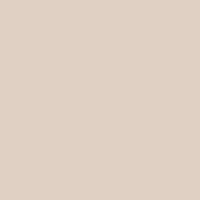The art deco period kicked off in the 1920s. However, while the Roaring Twenties might have given way to the Great Depression, the opulence of the art deco era endured and continues to be a favourite with interior designers.
Art deco design is instantly recognisable thanks to its daring use of saturated hues and common motifs like geometric prints. It's also heavily inspired by the world of architecture, with world-famous buildings like the Chrysler Building being a perfect example of art deco design principles in macro form.
Although it's generally considered a high-end and opulent approach to interior decor, art deco design can still be used in everyday spaces. With a little inspiration, you can make full use of an art deco colour palette to transform any room into a spectacular space.
What Types of Colours Are Associated With Art Deco Design?
Generally speaking, bold colour palettes are the way to go here. Rich reds, bold blues and vibrant greens are all commonly encountered in art deco interiors. These daring shades tend to be punctuated with metallics like chrome and silver, while classic contrasts like black and gold are also popular.
However, there's no one-size-fits-all approach when it comes to putting together an art deco palette. Some people reserve rich reds and greens for wall colours, before introducing all-black furniture and gold accents.
Others stick to jewel tones when painting walls and ceilings, before adding more subtle luxe accents into the mix. Need some help putting together your inspired art deco palette? We've picked our finest paint colours that will add instant glamour to any space.
Warm Beige Tones
If you're not ready to embrace art deco bold shades, it's best to stick with more muted tones instead. Warm beiges work incredibly well as an all-wall colour, leaving you plenty of flexibility to incorporate more daring accents at a later point.
Start with something like Mulberry H484. This off-white paint colour is warm and inviting, with subtle grey undertones making it easy to introduce metallic accents and monochromatic accents.
If you're after something more refined, think about using Kaolin H497. This milky cream colour works well in place of white, while green and yellow undertones serve as a good foundation for introducing further shades to liven up your interiors.
Even grey-infused beiges can work well in an art deco interior. Tailwind G486 is fairly pared-back, but silver undertones make it a superb foundation for more sophisticated spaces.
Test a Colour Out
Dark Blues
Blue is another brilliant addition to any art deco decor scheme. However, you'll want to avoid lighter hues and use darker, more arresting shades instead.
An intense Denim N429 paint colour works well for feature walls. However, this bold blue can also work well to decorate an entire room if you balance things out with a lighter tone.
If you're searching for something slightly lighter, think about using a cadet blue like Petrol S491. This more subtle shade works well with greys and off-whites, but it also pairs nicely with everything from forest green to gold-tone hardware.
Finally, there's Royal M436. This is one of our most intense blues, making it a fine choice for those rooms where you want to make a statement. Once again, this blue is undercut with a hint of vivid green, which can be accentuated by introducing accent colours or decorative pieces.
Forest Greens
Greens are always a good choice in interior design. When it comes to art deco interiors, stick to forest greens with richer pigments if you want to elevate your interiors.
A misty green like Fjord M442 will give your rooms an instant lift. With more than a hint of grey in the mix, this gorgeous grey will coordinate effortlessly with monochromatic elements like a black and white tiled floor.
Arbour S451 is a more subdued take on green, falling into the khaki category. Although it's fairly muted, it will still make a worthy addition to any art deco colour palette. Pair with solid black, gold or silver to great effect.
If you're looking for a more vivid green, think about using Basilica M384. This earthy green isn't lacking in character and will shake up any space. Pair it with olives, greys or tans.
Muted Oranges
If you're not a fan of red, a muted orange is a good alternative. These warm tones can be used to bring passion to gloomy spaces or contrast with more solid tones like grey and black.
Doll H405 is a particularly vibrant choice. Light and airy, this gentle orange has hints of pink that will add a playful touch to your decor schemes.
For a more vibrant take on a classic pastel, go with Siesta J407. This muted orange has a rich pink profile which works well alongside luxe accents and metallics.
Riviera Y406 is a more understated option. This light pastel orange has subtle notes of pink, making it a good choice for any room decked out in jewel tones.
Jewel Tones
Jewel tones are a terrific choice for any art deco interior. They're soft and subtle but don't lack sophistication. They're a high-end alternative to a neutral palette and are just as versatile.
Before you start thinking about secondary colours, you'll need a strong primary hue to anchor your room. Emerald L373 is a good shout, with this energetic green bringing a sense of opulence.
Grapefruit S302 will make another eye-catching addition to any wall. This curd yellow is subdued enough that you can use it fairly liberally. It'll work well with everything from classic black to peacock blues.
If you want to add saturated reds into the mix, go with Hearts M323. This bright take on crimson is quintessentially art deco. The perfect partner to monochromes, it also works well with just about any metallic.
What Other Design Elements Should I Consider When Using Art Deco Style?
An inspired art deco palette will go only so far. Once you've picked out colours for your walls and ceilings, you'll need to think carefully about introducing further elements.
Geometric motifs are a staple of art deco design. You can incorporate them with artwork or bring them into the mix with printed upholstery and throws. Tight repeated patterns are the standard when it comes to art deco patterns.
Your material choices should also represent the high-end luxury of art deco. Use silk, velvet and chenille if your budget stretches. If you're looking for something more affordable, linen, damask cotton and merino wool are all good choices.
A true art deco interior should be kitted out with sculptures, so you'll want to explore the world of decorative arts to find your perfect piece. Art deco figurines can be picked up relatively cheaply, although it's worth spending a little more on at least one premium piece.
As far as artwork is concerned, you have a few options. Art deco and art nouveau posters are an easy way to channel the spirit of the early 20th century, but they won't exactly elevate your space. Instead, think about investing in abstract prints or sculptural reliefs enriched with gold details.













